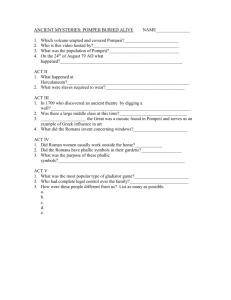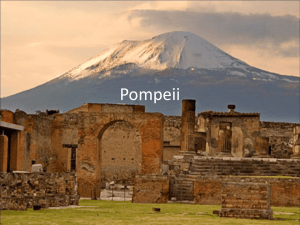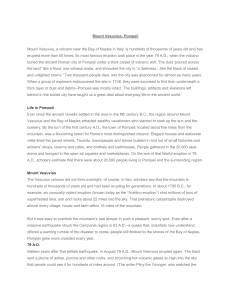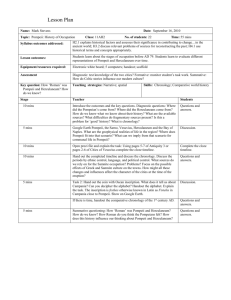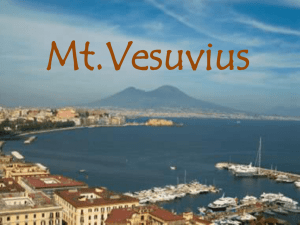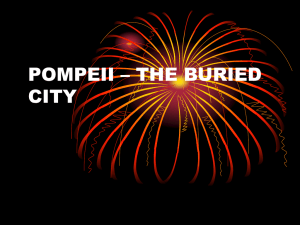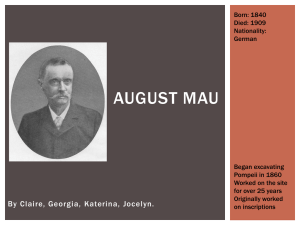Pompeii-Article - Madeira City Schools
advertisement
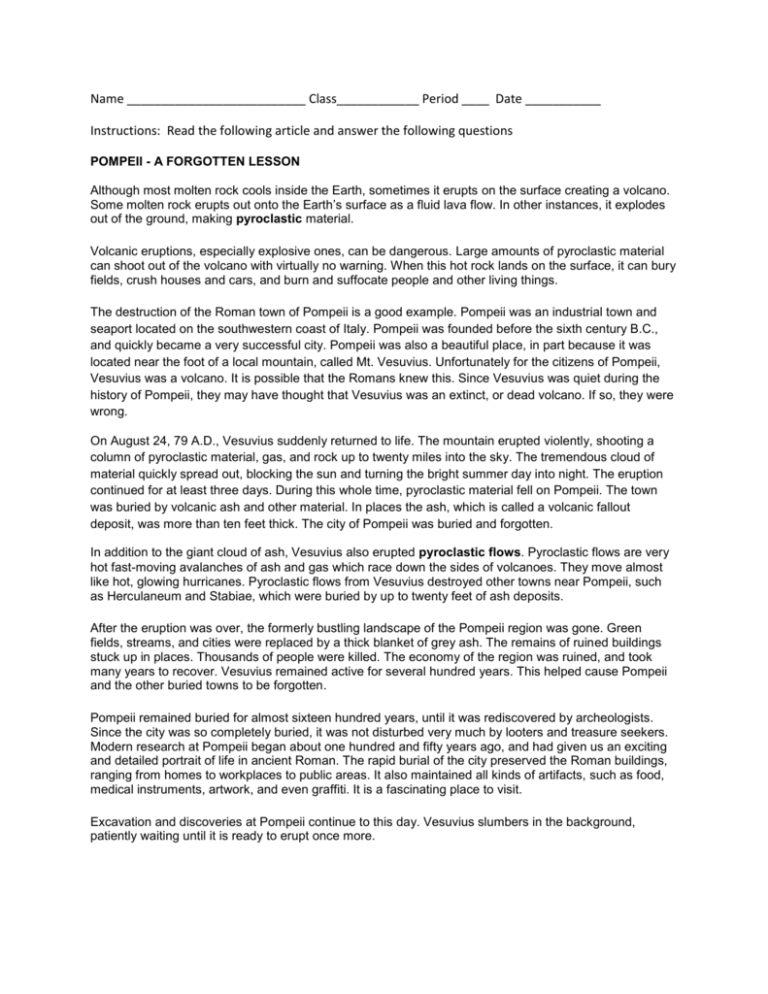
Name __________________________ Class____________ Period ____ Date ___________ Instructions: Read the following article and answer the following questions POMPEII - A FORGOTTEN LESSON Although most molten rock cools inside the Earth, sometimes it erupts on the surface creating a volcano. Some molten rock erupts out onto the Earth’s surface as a fluid lava flow. In other instances, it explodes out of the ground, making pyroclastic material. Volcanic eruptions, especially explosive ones, can be dangerous. Large amounts of pyroclastic material can shoot out of the volcano with virtually no warning. When this hot rock lands on the surface, it can bury fields, crush houses and cars, and burn and suffocate people and other living things. The destruction of the Roman town of Pompeii is a good example. Pompeii was an industrial town and seaport located on the southwestern coast of Italy. Pompeii was founded before the sixth century B.C., and quickly became a very successful city. Pompeii was also a beautiful place, in part because it was located near the foot of a local mountain, called Mt. Vesuvius. Unfortunately for the citizens of Pompeii, Vesuvius was a volcano. It is possible that the Romans knew this. Since Vesuvius was quiet during the history of Pompeii, they may have thought that Vesuvius was an extinct, or dead volcano. If so, they were wrong. On August 24, 79 A.D., Vesuvius suddenly returned to life. The mountain erupted violently, shooting a column of pyroclastic material, gas, and rock up to twenty miles into the sky. The tremendous cloud of material quickly spread out, blocking the sun and turning the bright summer day into night. The eruption continued for at least three days. During this whole time, pyroclastic material fell on Pompeii. The town was buried by volcanic ash and other material. In places the ash, which is called a volcanic fallout deposit, was more than ten feet thick. The city of Pompeii was buried and forgotten. In addition to the giant cloud of ash, Vesuvius also erupted pyroclastic flows. Pyroclastic flows are very hot fast-moving avalanches of ash and gas which race down the sides of volcanoes. They move almost like hot, glowing hurricanes. Pyroclastic flows from Vesuvius destroyed other towns near Pompeii, such as Herculaneum and Stabiae, which were buried by up to twenty feet of ash deposits. After the eruption was over, the formerly bustling landscape of the Pompeii region was gone. Green fields, streams, and cities were replaced by a thick blanket of grey ash. The remains of ruined buildings stuck up in places. Thousands of people were killed. The economy of the region was ruined, and took many years to recover. Vesuvius remained active for several hundred years. This helped cause Pompeii and the other buried towns to be forgotten. Pompeii remained buried for almost sixteen hundred years, until it was rediscovered by archeologists. Since the city was so completely buried, it was not disturbed very much by looters and treasure seekers. Modern research at Pompeii began about one hundred and fifty years ago, and had given us an exciting and detailed portrait of life in ancient Roman. The rapid burial of the city preserved the Roman buildings, ranging from homes to workplaces to public areas. It also maintained all kinds of artifacts, such as food, medical instruments, artwork, and even graffiti. It is a fascinating place to visit. Excavation and discoveries at Pompeii continue to this day. Vesuvius slumbers in the background, patiently waiting until it is ready to erupt once more. Questions: 1. Where is POMPEII located in the world and near what mountain? 2. How long had the mountain remained quiet? 3. Why is this a dangerous assumption? 4. What are pyroclastic flows? 5. How long did POMPEII remain buried? What kind of things did archeologists discover?
